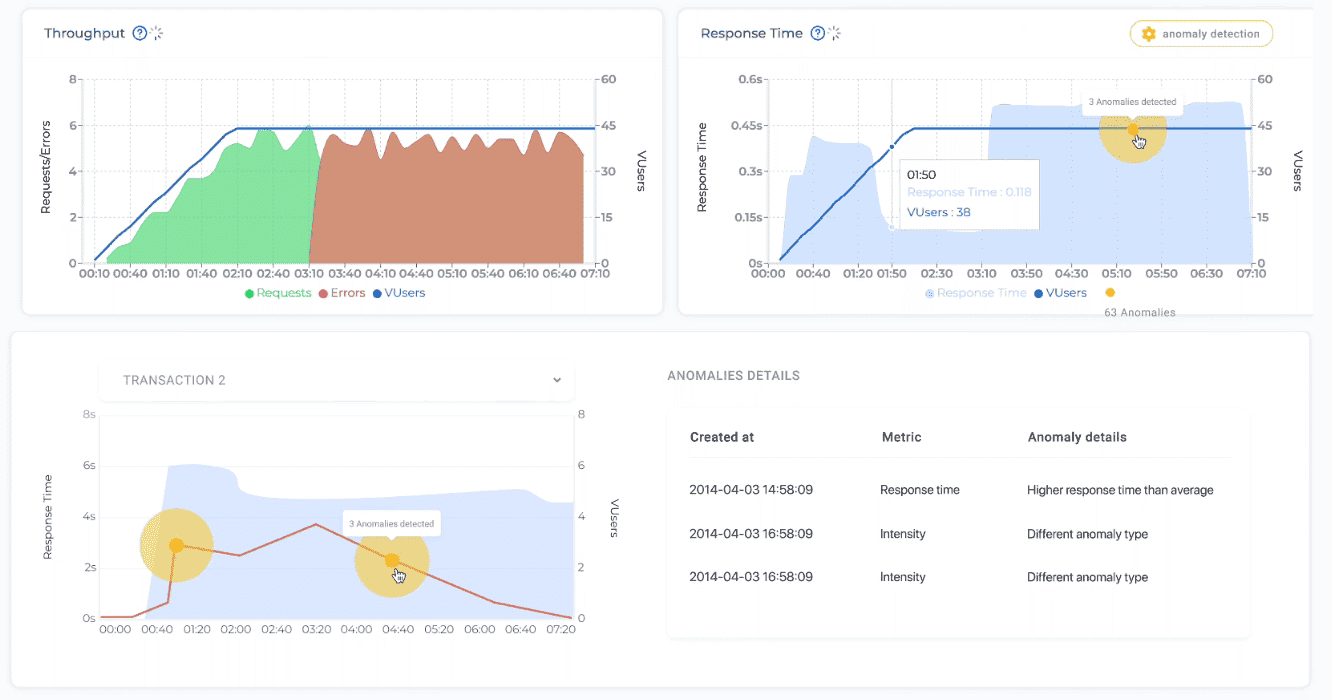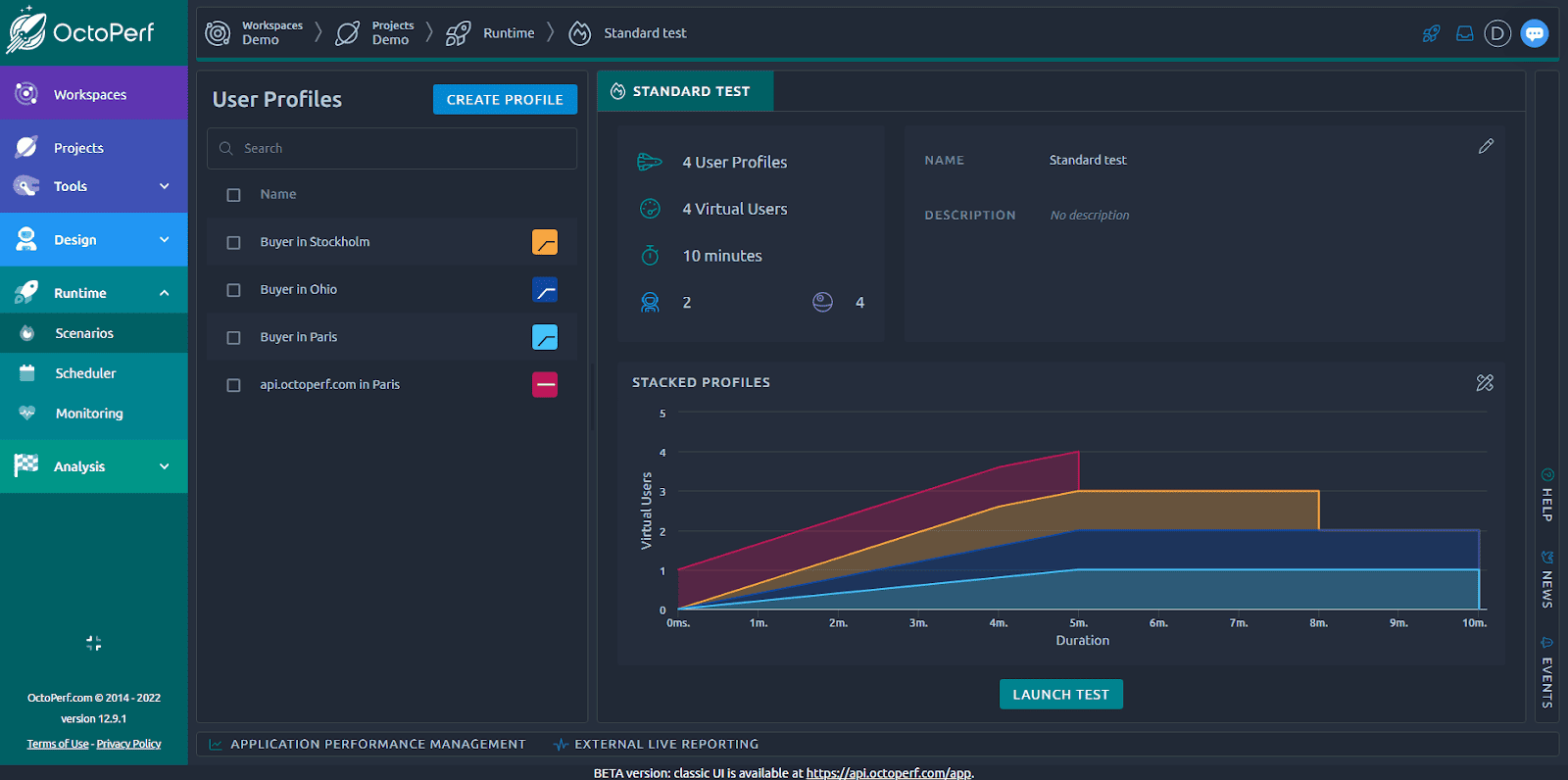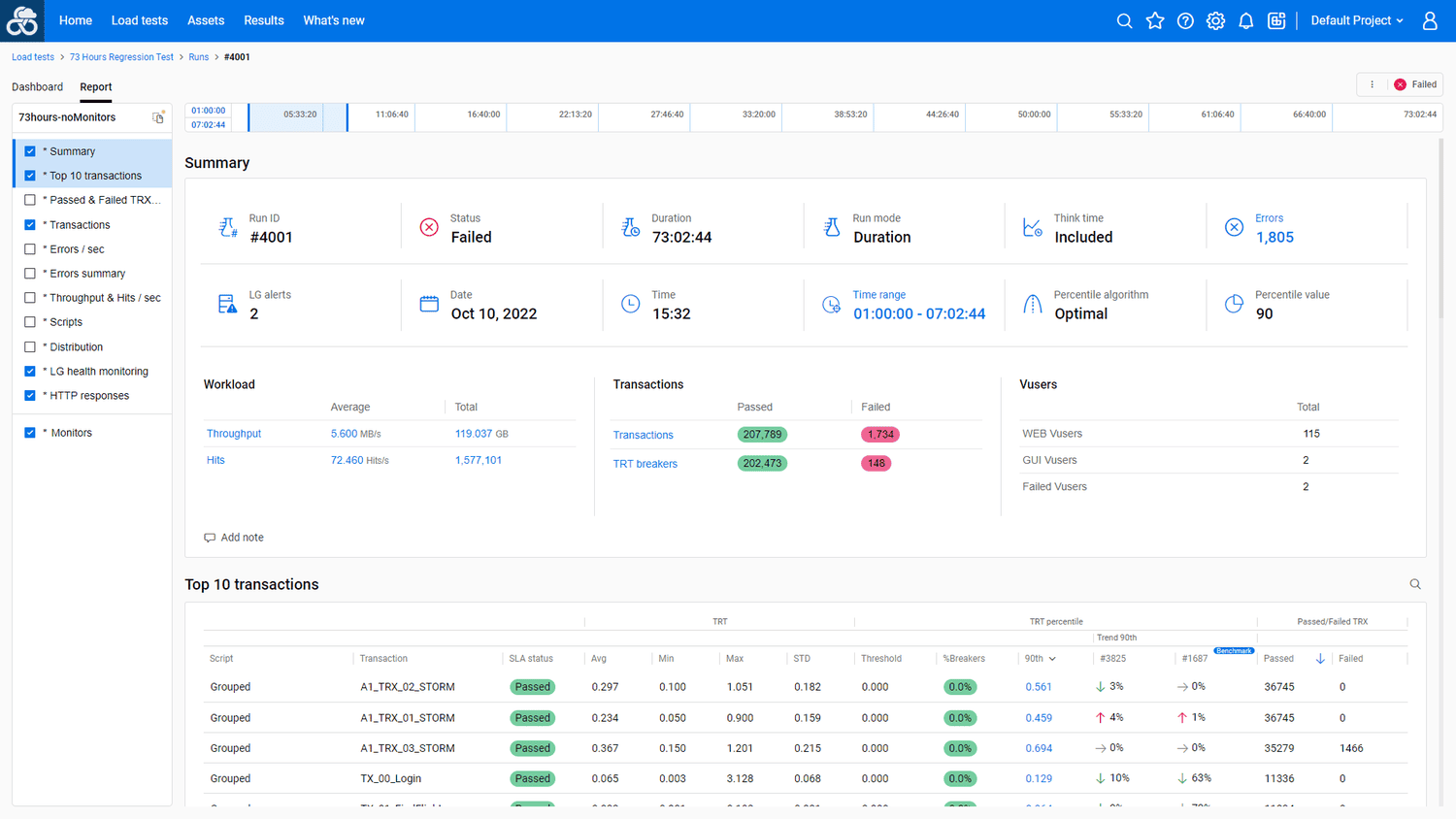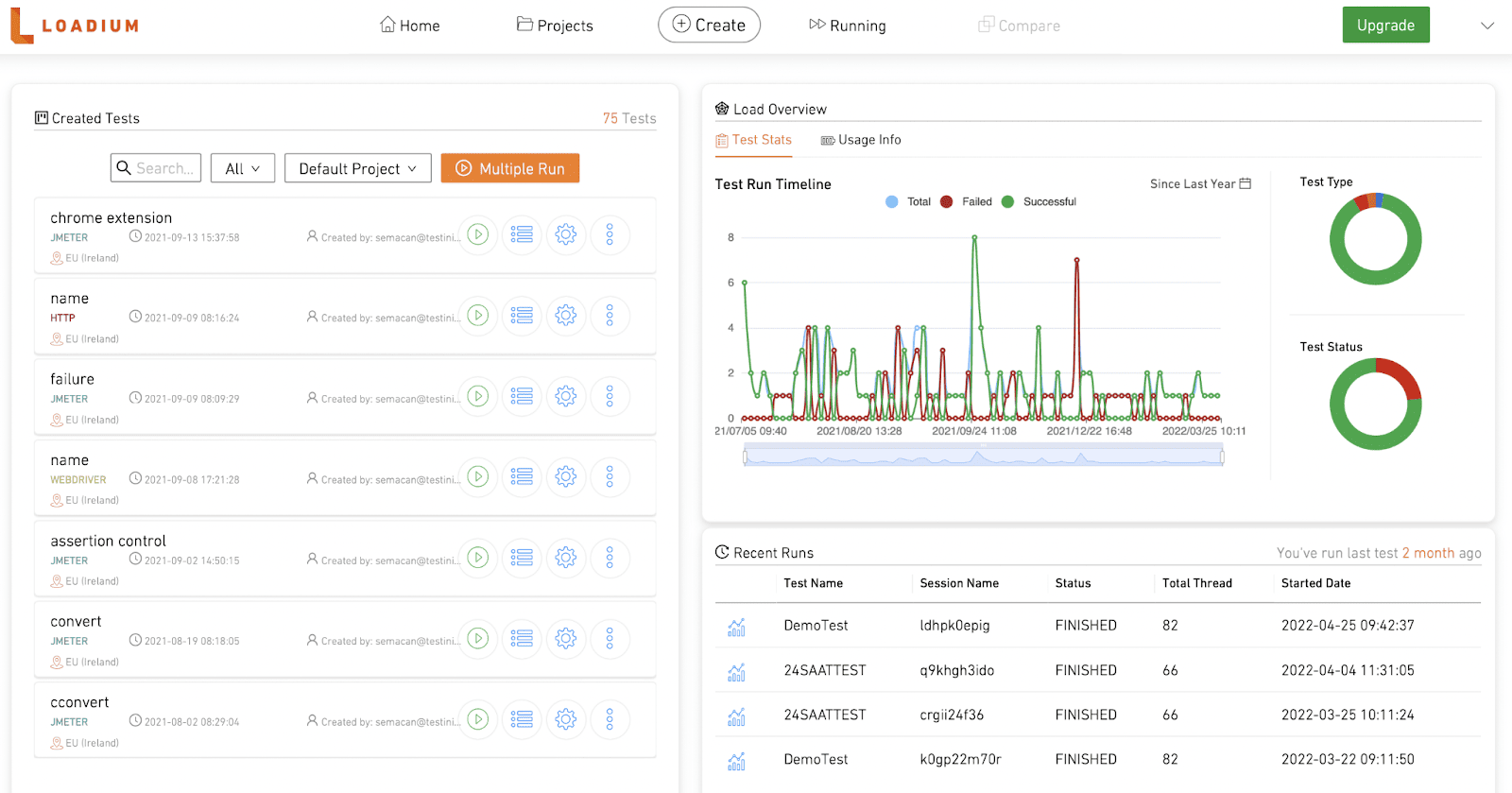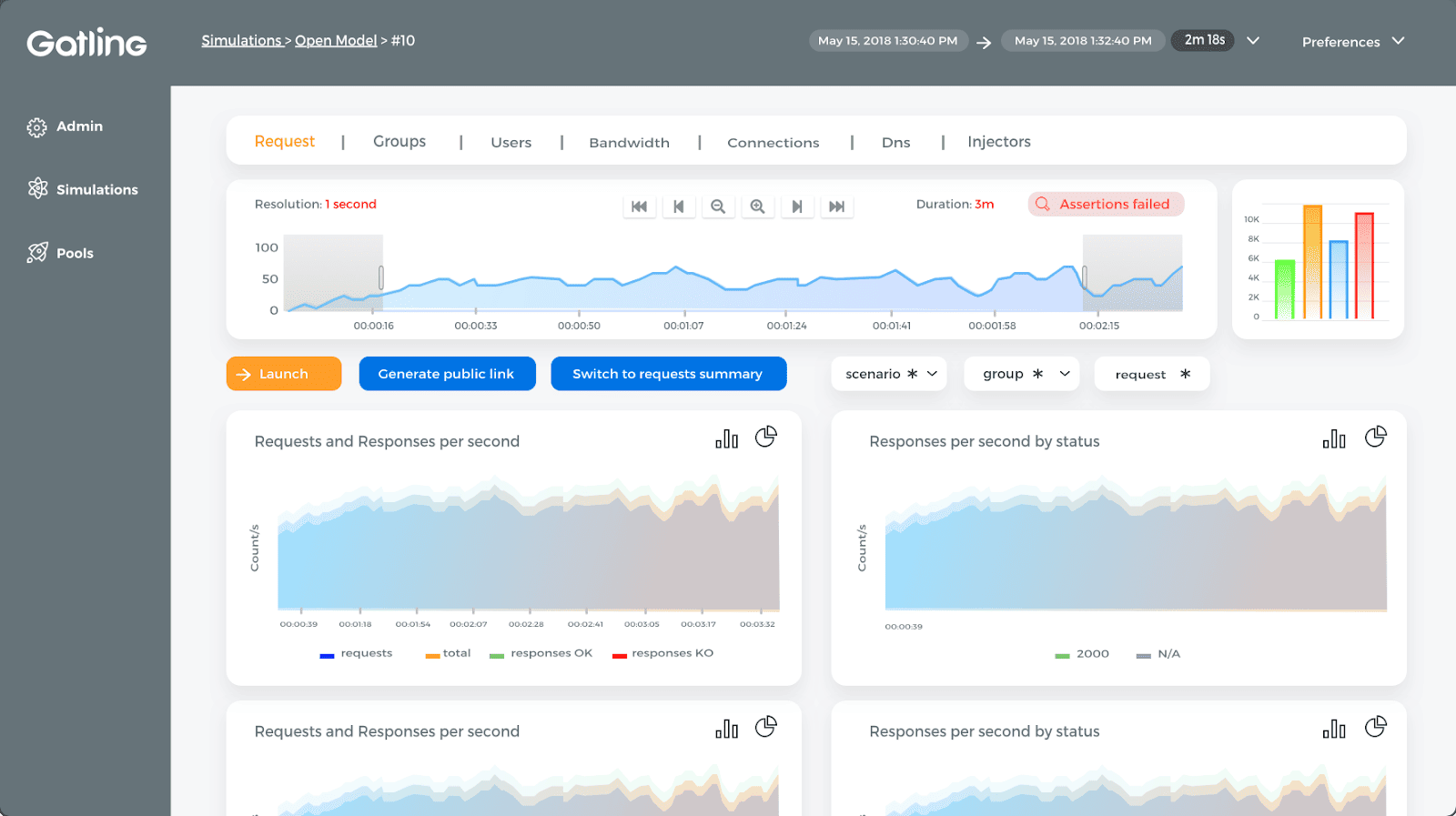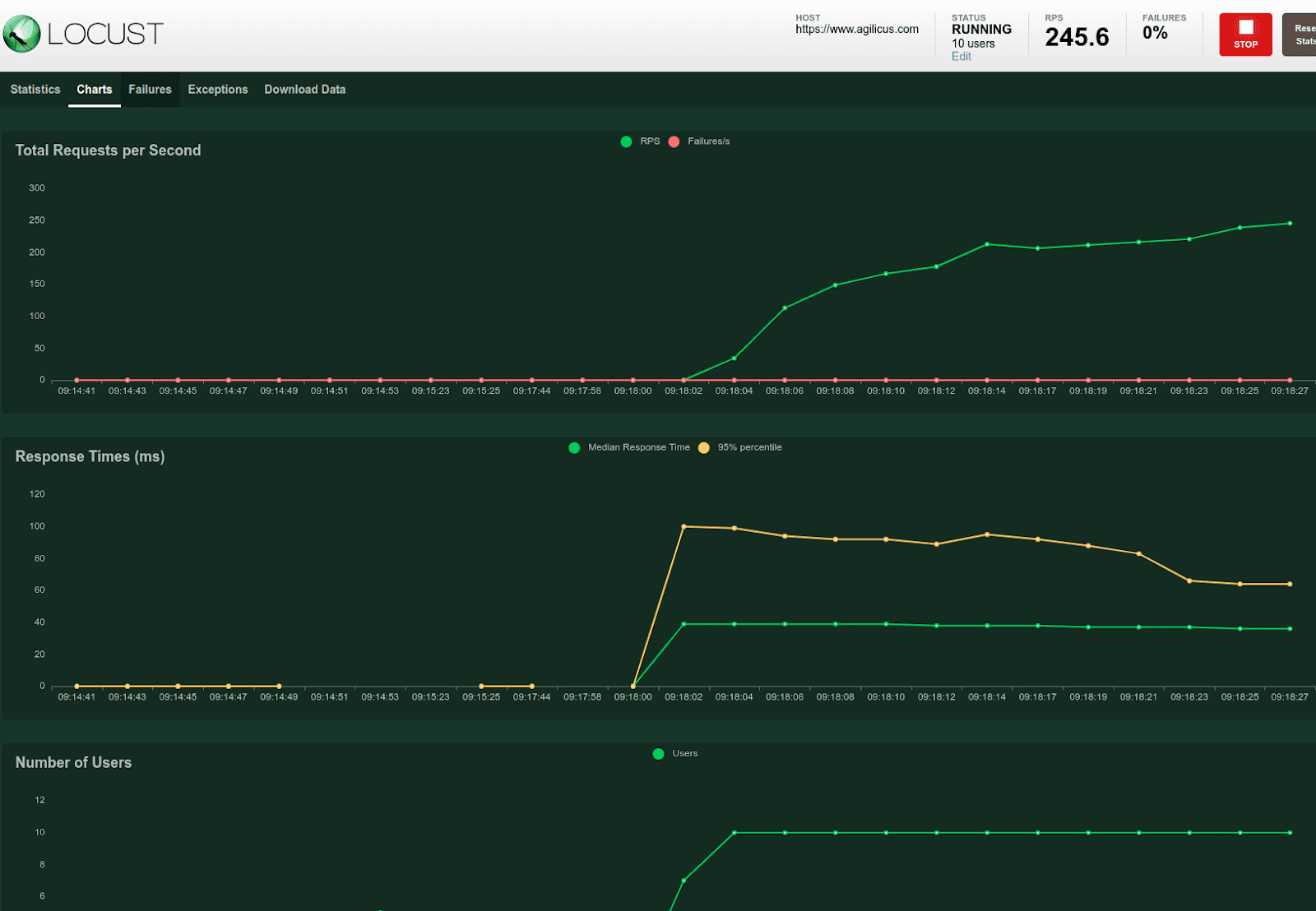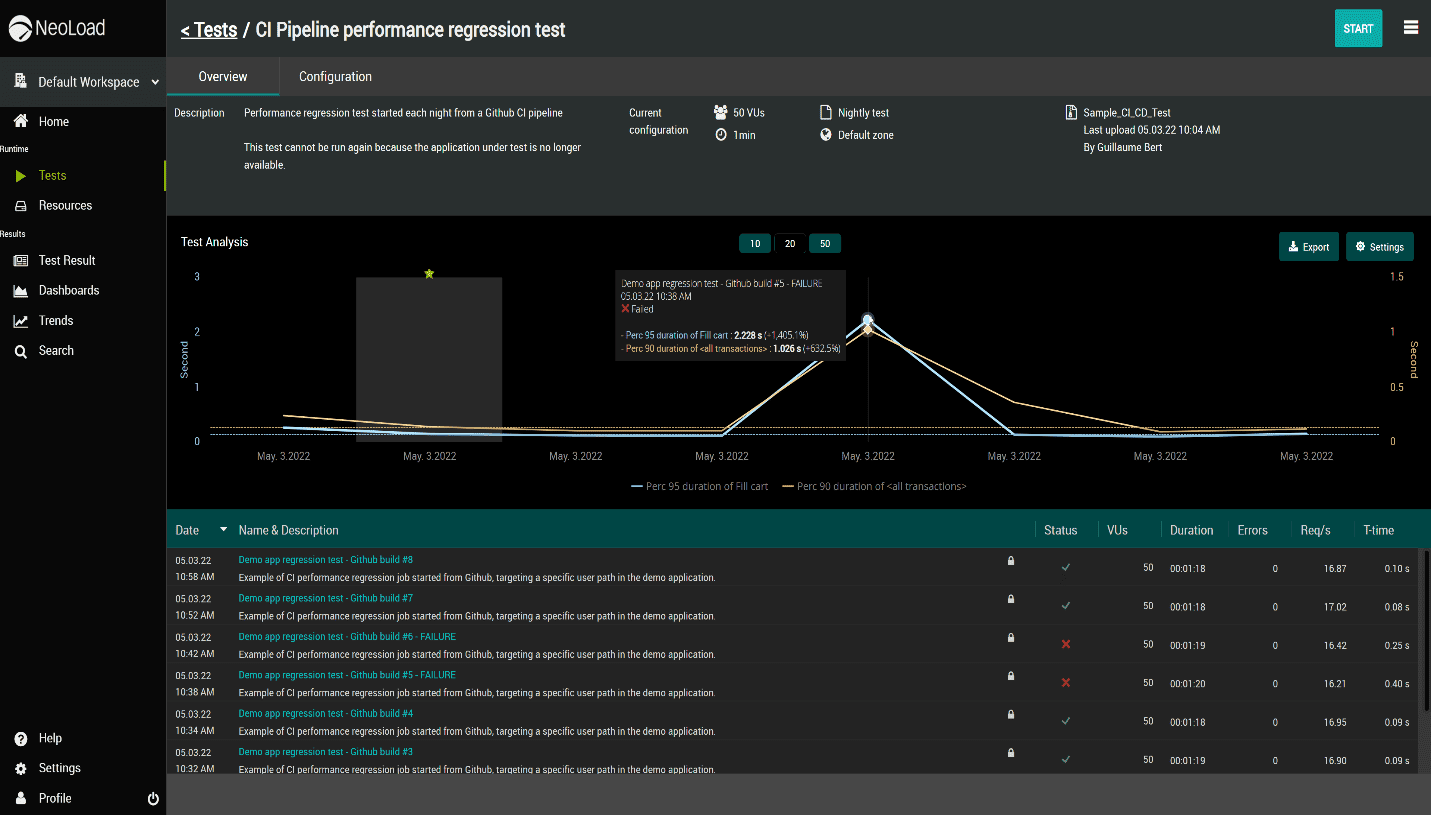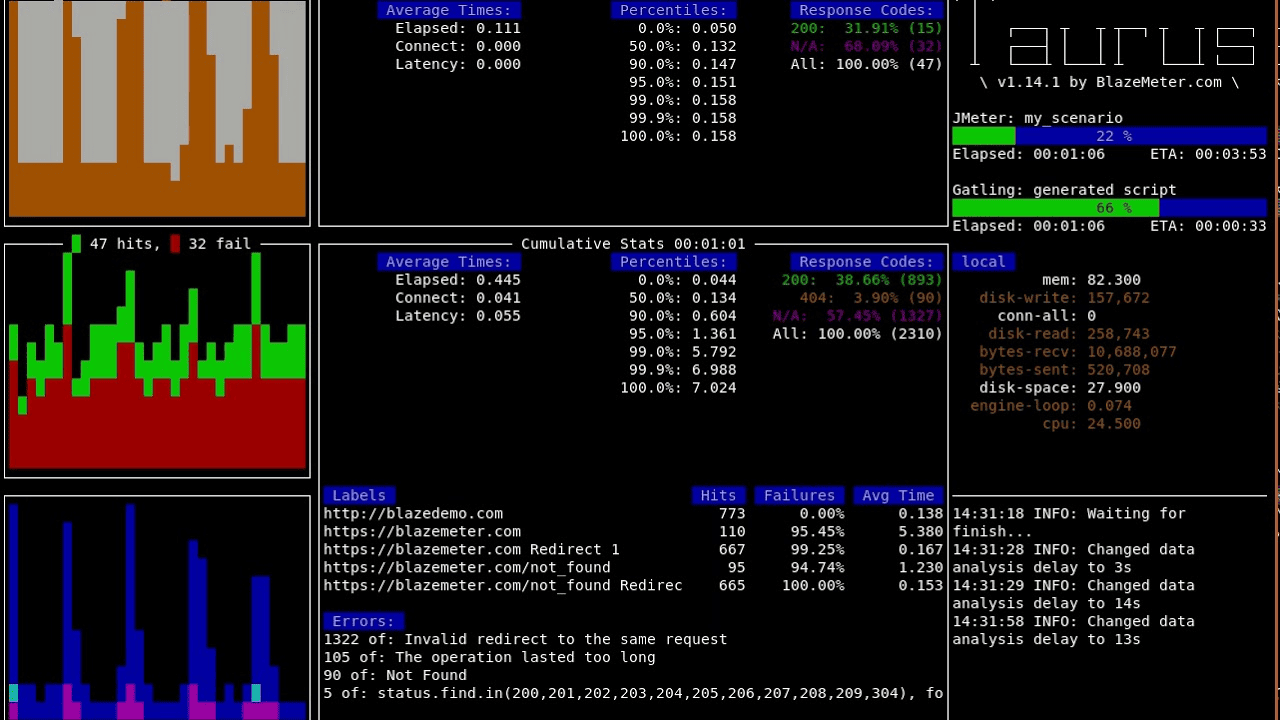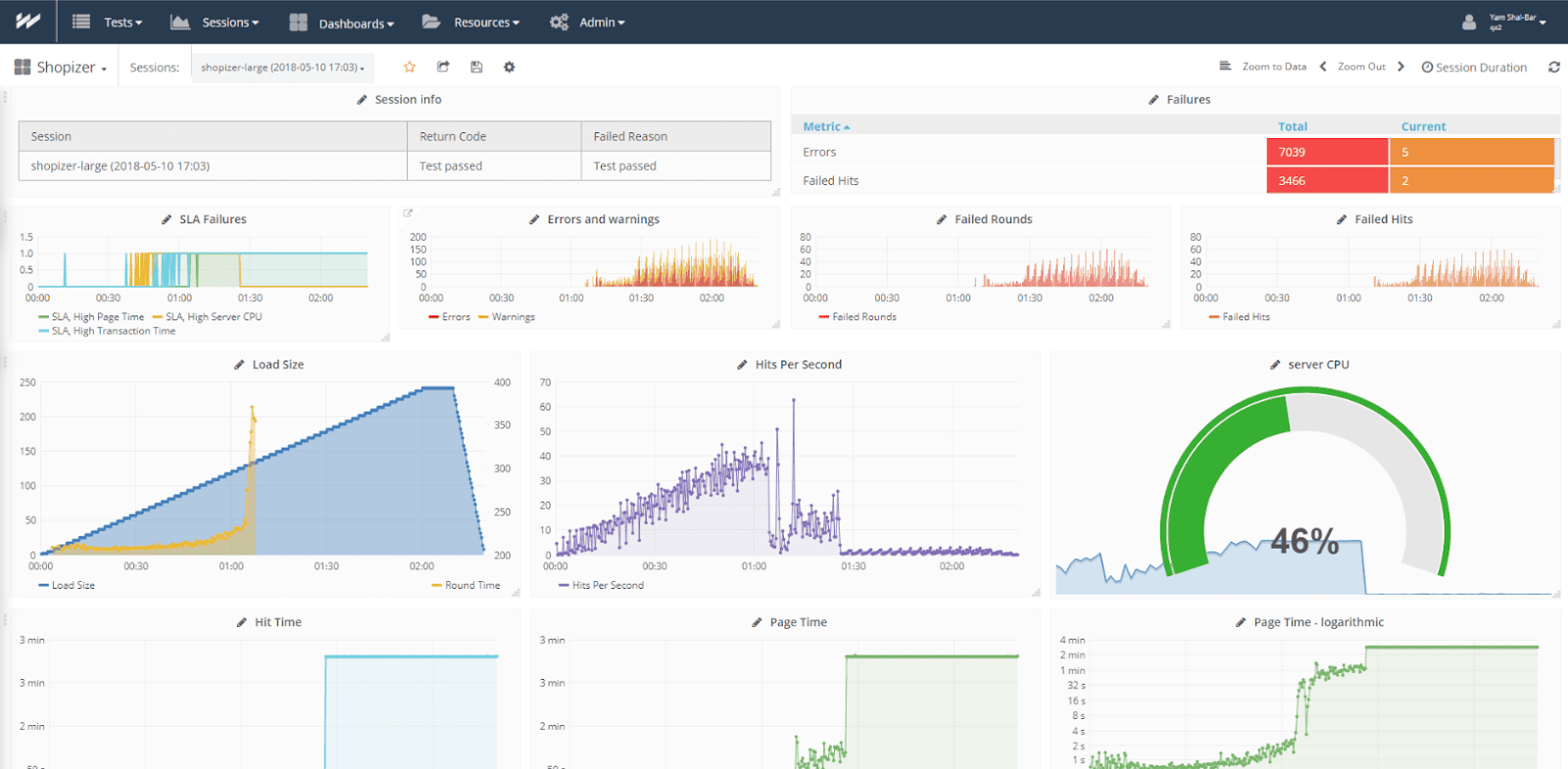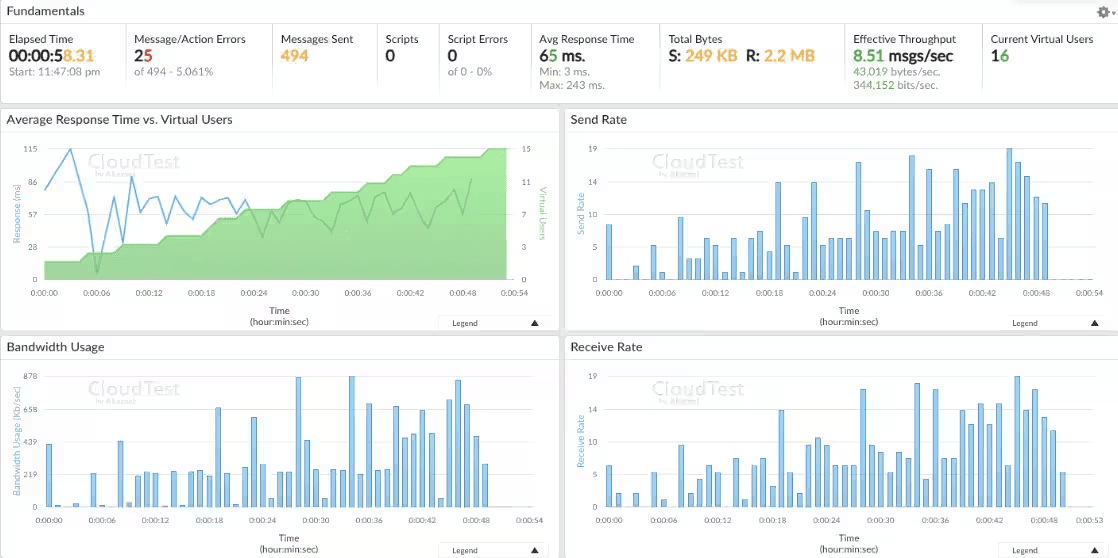Over a decade ago, BlazeMeter reshaped the landscape of load testing by moving it to the cloud. Serving as a cloud-based execution platform for the well-known JMeter, it freed engineers from the burden of managing infrastructure and allowed them to focus solely on testing. The result was a significant reduction in operational complexity and a surge in testing scalability. Since then, many other best load testing tools have followed suit, offering cloud-based testing.
In this article, we’ll explore some of the top BlazeMeter alternatives, each offering unique features and advantages. Selecting the right tool can be challenging, but we’ll guide you through the key choices to help you.
PFLB
Nowadays, a new major shift is taking place where cloud-based load testing meets AI, and that’s where PFLB comes in.
PFLB, a cloud-based load testing tool, pioneers AI-powered performance insights for bottleneck detection, integrates AI further into the load testing process and simplifies the work of performance engineers.
PFLB has a proven track record in delivering top-notch performance testing solutions for diverse industries, including e-commerce, finance, e-learning, and more.
Key Features
OctoPerf
OctoPerf’s USP is its user-friendly, cloud-based performance testing with real-time analytics and distributed load testing. It supports scriptless test creation, integrates with CI/CD pipelines, and offers advanced reporting for efficient, scalable testing.
Key Features
LoadRunner Cloud
LoadRunner Cloud facilitates a scalable, cloud-based performance testing for enterprise applications. It supports massive user loads from multiple regions, integrates with CI/CD pipelines, and offers real-time analytics through an intuitive interface. Its broad protocol support ensures versatility for complex testing needs. Read more about Blazemeter vs LoadRunner vs PFLB.
Key Features
Loadium
Loadium is a versatile cloud-based performance testing tool designed to help teams efficiently simulate high user traffic and identify application bottlenecks. Built on Apache JMeter, it provides an accessible and scalable solution for developers and testers.
Key Features
Gatling Cloud
Gatling Cloud is a cloud-based performance testing solution that extends Gatling’s capabilities for scalable, distributed load testing. It offers real-time monitoring, automated reporting, and detailed insights to help optimize application performance. With CI pipeline integration, it supports seamless automation and scaling, making it a convenient choice for cloud-native load testing.
Key Features
Locust.Cloud
A cloud-based version of Locust. Among all the BlazeMeter competitors, this tool is lightweight, scalable load testing framework built for developers. Written in Python, it allows users to create custom test scenarios with simple and flexible code. Locust.Cloud supports distributed testing, enabling the simulation of millions of concurrent users across multiple machines. Its real-time web-based UI provides live monitoring and control during tests. Integrates with CI/CD pipelines and works well for both API and application performance testing.
Key Features
NeoLoad
NeoLoad is an enterprise-grade performance testing tool optimized for modern DevOps. It supports scalable load simulations for web, mobile, and APIs, integrates seamlessly with CI/CD pipelines, and offers a graphical interface for easy test design. With actionable analytics and flexible deployment options, NeoLoad is ideal for high-volume, complex environments. Read also about Loadrunner vs Neoload.
Key Features
Taurus
Taurus is an open-source, automation-friendly performance testing platform developed by the Blazemeter team. It supports multiple testing tools (like JMeter, Gatling, Locust, etc.) and integrates seamlessly with CI/CD pipelines. Taurus offers easy-to-understand YAML configuration and provides real-time results with detailed reporting. By making Taurus open-source, BlazeMeter aimed to tap into a broader audience.
Key Features
WebLOAD
WebLOAD is a professional-grade load testing tool designed for large-scale applications, particularly in the enterprise sector. It offers advanced scripting capabilities, supports distributed load testing, and integrates with CI/CD pipelines. WebLOAD provides real-time monitoring and detailed reporting, making it ideal for performance testing in complex, high-traffic environments.
Key Features
Akamai CloudTest
Yet another BlazeMeter alternative, Akamai CloudTest is a load testing platform that specializes in high-performance, secure content delivery at scale. With a vast network of edge servers, Akamai ensures low latency, fast load times, and robust security for websites and applications. It specializes in DDoS protection, web application security, and traffic management, providing enterprises with a reliable solution for performance and security at the edge of the internet.
Key Features
Final Thought
When choosing between the BlazeMeter performance testing alternatives, consider your team’s specific needs, whether they involve API-focused testing, cloud-native applications, or enterprise-grade scalability. Each tool in this list offers unique features and capabilities, offering viable options for modern performance testing.
If you’re looking for a solution that goes beyond traditional cloud-based load testing, PFLB stands out with AI-powered performance insights. With its cutting-edge technology and focus on simplifying complex workflows, PFLB JMeter cloud load testing tool empowers performance engineers to get actionable and reliable results faster.
Related insights in blog articles
Swagger API Testing: What It Is, How It Works, and Best Practices for QA Teams

Testing APIs without proper documentation can feel like walking through fog — every endpoint is a guess, every parameter a risk. But not with Swagger UI API testing. Swagger turns static API definitions into a live, interactive interface where developers and QA teams can validate endpoints, check request/response schemas, and explore the system in real […]
BlazeMeter vs. JMeter: Full Comparison
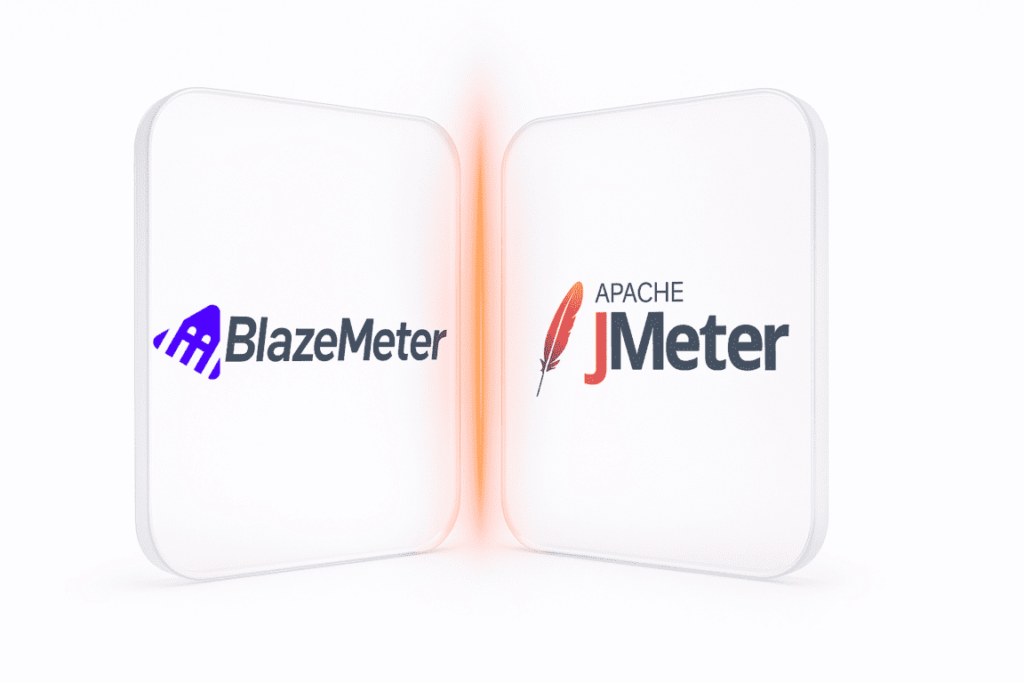
Ever wondered whether you should stick with Apache JMeter or move your tests to BlazeMeter? Both tools are powerhouses in performance and load testing, but they serve different needs. JMeter is an open-source desktop tool under the Apache 2.0 license; ideal for local or distributed testing across HTTP, APIs, JDBC, and more. BlazeMeter, on the […]
Endurance Testing: What It Is, Types & Examples
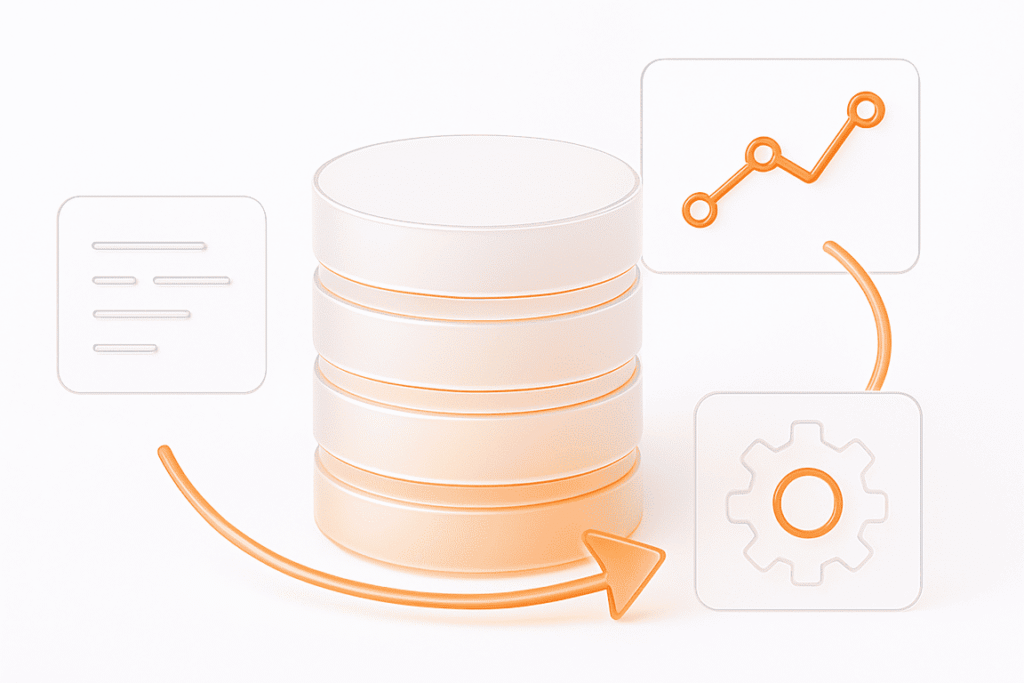
When performance engineers talk about endurance testing, they usually mean soak testing — a long-duration performance test that keeps the system under a steady, realistic workload for hours or even days. It’s designed to uncover what short stress or load tests can’t: slow memory leaks, growing queues, or throughput that quietly drops overnight. By tracking […]
Top 5 AI Load Testing Tools in 2025: Smarter Ways to Test Performance
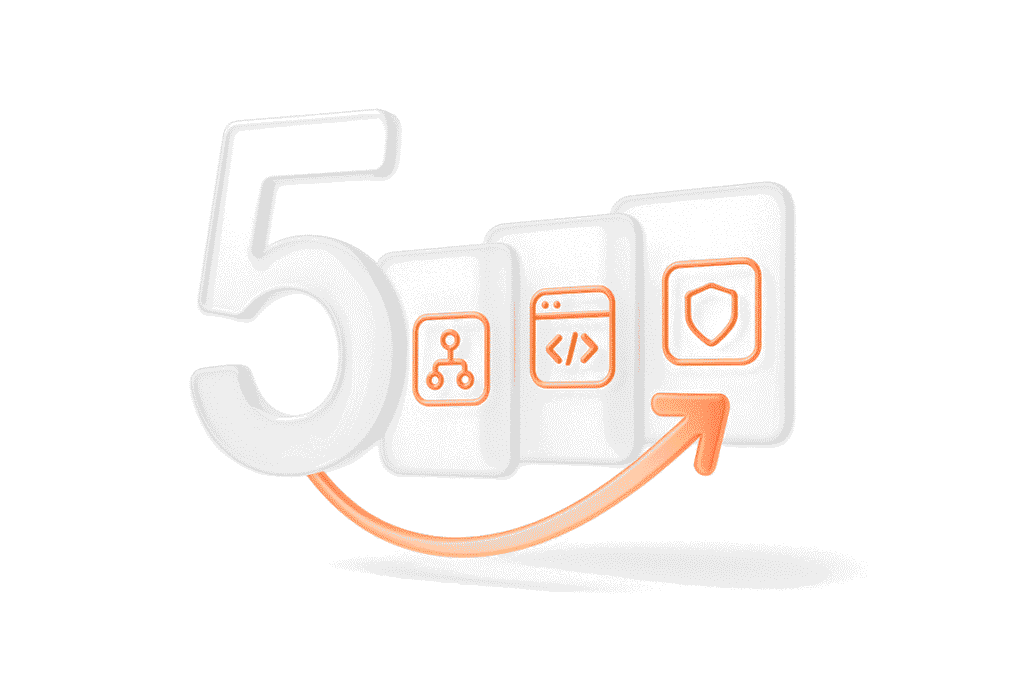
AI is quickly becoming the most overused promise in software testing — every platform now claims it, but few can prove it.Some “AI load testing tools” genuinely analyze data, learn from patterns, and generate meaningful insights. Others stop at fancy dashboards and static scripts dressed in new terminology. In this comparison, we’ll separate real machine […]
Be the first one to know
We’ll send you a monthly e-mail with all the useful insights that we will have found and analyzed
People love to read
Explore the most popular articles we’ve written so far
- Top 10 Load Testing Tools for 2025: The Deep Dive Sep 9, 2025
- Cloud-based Testing: Key Benefits, Features & Types Dec 5, 2024
- Benefits of Performance Testing for Businesses Sep 4, 2024
- Android vs iOS App Performance Testing: What’s the Difference? Dec 9, 2022
- How to Save Money on Performance Testing? Dec 5, 2022


